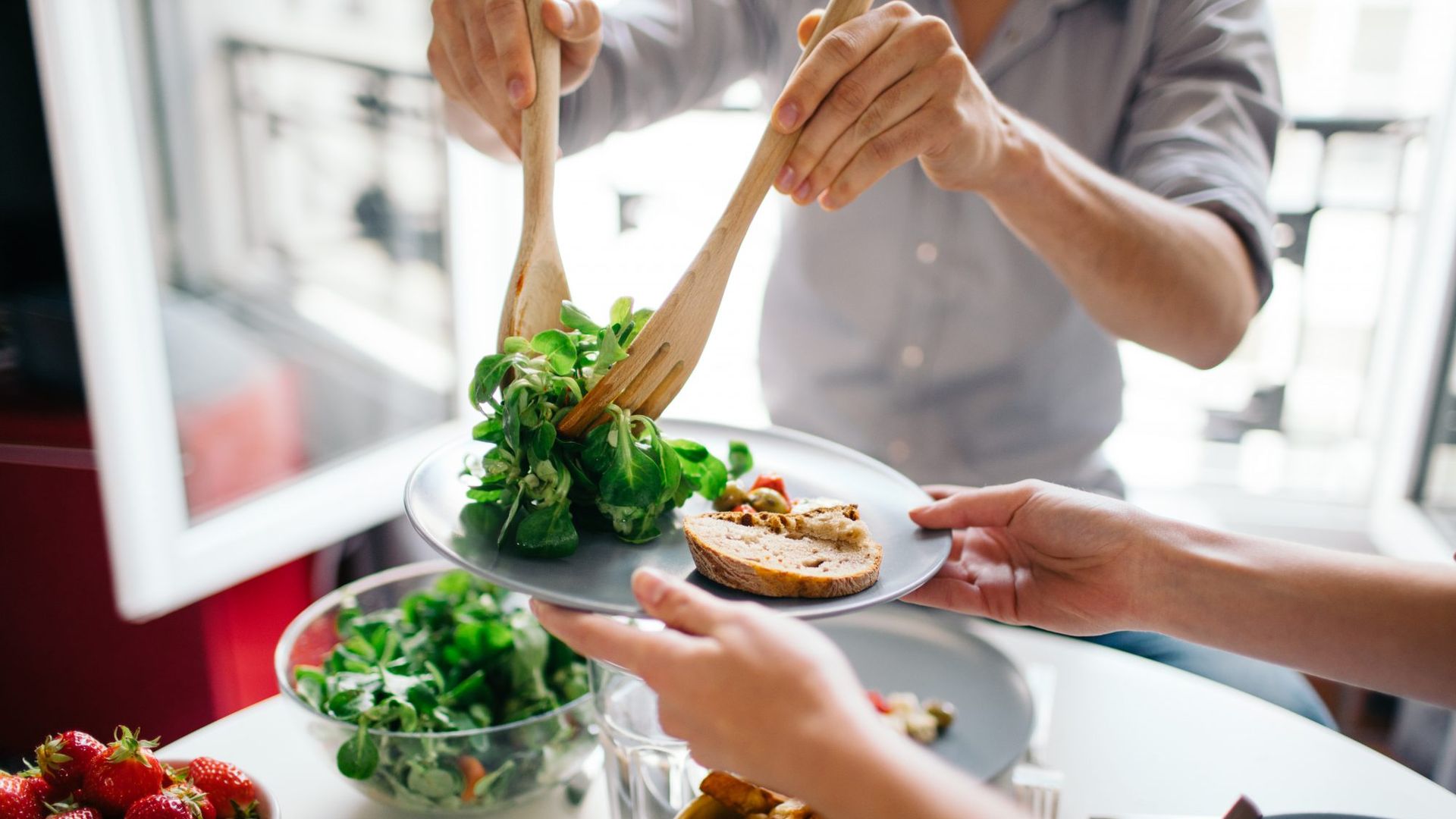The new coronavirus, which is called SARS-CoV-2, is mainly transmitted through respiratory droplets.
If someone who has the virus talks, coughs, or sneezes, and you inhale these droplets, you can develop COVID-19.
Respiratory droplets that contain the virus can also land on various surfaces.
Although it’s less common, the new coronavirus can also be transmitted through contact with a contaminated surface and then touching your nose, mouth, or eyes.
Because of this, there’s been some concern about contracting the virus through food or food packaging.
However, according to the Centers for Disease Control and Prevention (CDC)Trusted Source, the risk of this happening is actually very low.
In this article, we’ll take a closer look at what’s known about contracting the coronavirus from food or food packaging, and the steps you can take to keep yourself safe.
Can you get COVID-19 from food you buy at the grocery store?
Coronaviruses need living host cells in order to thrive. Unlike bacteria or fungi, they cannot multiply in or on food.
It’s still possible for the coronavirus to be present on food. Indeed, some research that’s currently in pre-print has found that the virus can survive on refrigerated or frozen meats for weeks.
However, the CDC notes that there’s currently no evidence to support that the spread of COVID-19 is associated with food.
Additionally, taking appropriate food safety measures can help ensure that you don’t get sick from food.
RELATED: COVID-19 Vaccination Side Effects On Women
Proper food safety not only reduces the risk of contracting the virus, but it also prevents exposure to germs that can cause foodborne illnesses, such as salmonella, E. coli, and listeria.
Let’s explore some food safety tips that can help protect you from contracting harmful germs — including the new coronavirus — from the food you eat.
Wash your hands
Wash your hands thoroughly with soap and warm water both before and after handling food.
It’s particularly important to wash your hands after handling raw food items like meat, poultry, and seafood.
Cook food to the right temperature
Many foods have a safe minimum cooking temperature. This is the internal temperature that a food needs to be cooked to in order to kill potentially harmful germs like bacteria.
The safe minimum cooking temperature can vary by food type. Some examples of a safe minimum cooking temperature include:
- Poultry: 165°F
- Ground beef, pork, lamb, veal: 160°F
- Fresh beef, pork, lamb, veal: 145°F
- Fish: 145°F or until flesh is opaque and flakes easily with a fork
Be sure to know the minimum cooking temperature for your food prior to cooking it. You can measure a food’s internal temperature by using a food thermometer.
Rinse fresh produce
Because germs can be found on the surface of fresh produce, it’s important to rinse these items thoroughly before eating them.
To do this, gently rub the surface of the produce while it’s under cold running water. For firm produce like potatoes or apples, you can use a clean brush with no soap to help you gently scrub the surface.
Avoid using soap, bleach, or disinfectants to clean fresh produce. These can be harmful to you if you ingest them.
Refrigerate or freeze promptly
Some foods need to be refrigerated or frozen. Store these items at the proper temperature as soon as possible.
Bacteria can grow on or in these items if they’re allowed to sit out at room temperature.
If frozen foods need to be thawed before cooking, make sure to do so safely. Safe ways to thaw frozen foods include in the refrigerator, under cold water, and by using your microwave.
Can the virus that causes COVID-19 survive on food packaging?
According to the Centers for Disease Control and Prevention (CDC), there have been no cases of COVID-19 that have been associated with food packaging or shopping bags.
However, it’s possible that the new coronavirus can survive on these surfaces.
In fact, studies have been performed on how long the new coronavirus can survive on several different surfaces. Some of these include common food packaging materials, such as:
- Plastic. The virus can survive between 3 and 7 days on plastic.
- Cardboard. The virus can survive up to 24 hours on cardboard.
- Glass. The virus can survive up to 4 days on glass.
- Cloth. The virus can survive up to 2 days on cloth.
It’s important to remember that these studies were done in standardized laboratory conditions.
If the virus is present on food packaging, it’s likely to be in small amounts and will also be sensitive to conditions like temperature and humidity.
Overall, the new coronavirus doesn’t survive well outside of the human body. Because of this, wiping down your groceries isn’t typically necessary.
Follow these tips to stay as safe as possible while handling food packaging:
- Wash your hands thoroughly after getting back from the grocery store, after putting away your groceries, or after removing food from its packaging.
- Avoid using bleach, ammonia, or other disinfectants to clean food packaging.
- Discard any unneeded food packaging or shopping bags promptly into the appropriate recycling or waste bin.
- Wash soiled cloth shopping bags with your normal laundry.






